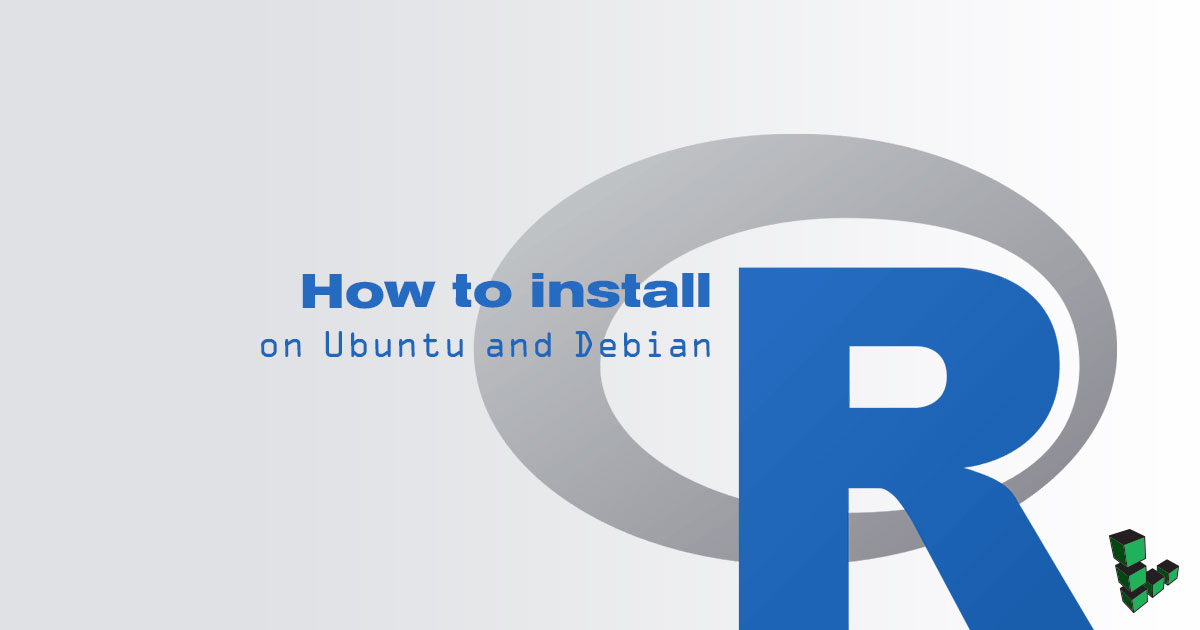Product docs and API reference are now on Akamai TechDocs.
Search product docs.
Search for “” in product docs.
Search API reference.
Search for “” in API reference.
Search Results
results matching
results
No Results
Filters
How to install R on Ubuntu and Debian
Traducciones al EspañolEstamos traduciendo nuestros guías y tutoriales al Español. Es posible que usted esté viendo una traducción generada automáticamente. Estamos trabajando con traductores profesionales para verificar las traducciones de nuestro sitio web. Este proyecto es un trabajo en curso.



What is R?
R is a programming language used for statistical analysis in addition to data visualization. The language is highly extensible through the Comprehensive R Archive Network(CRAN) , which hosts more than 10,000 R packages for producing publication quality figures, specialized computational tools, and more.
Although R can be installed through the default Debian or Ubuntu repository, the method outlined in this guide will ensure that you install the most up-to-date stable release.
Install R on Ubuntu and Debian
Install the R package that’s included in your distribution’s main package repository. For Ubuntu and Debian, run the following command:
sudo apt update && install r-baseIf you need R developer tools, also install the r-base-dev package. To install an older version or to learn more about the installation process, review the Ubuntu Packages For R - Full Instructions
guide.
Download Packages from CRAN
Open the R interpreter:
RThe interpreter will open with some information about the version. Enter
install.packages("ggplot2"):R version 3.4.3 (2017-11-30) -- "Kite-Eating Tree" Copyright (C) 2017 The R Foundation for Statistical Computing Platform: x86_64-pc-linux-gnu (64-bit) R is free software and comes with ABSOLUTELY NO WARRANTY. You are welcome to redistribute it under certain conditions. Type 'license()' or 'licence()' for distribution details. Natural language support but running in an English locale R is a collaborative project with many contributors. Type 'contributors()' for more information and 'citation()' on how to cite R or R packages in publications. Type 'demo()' for some demos, 'help()' for on-line help, or 'help.start()' for an HTML browser interface to help. Type 'q()' to quit R. > install.packages("ggplot2")A list of available mirrors should appear. Pick the closest location to maximize transfer speeds:
--- Please select a CRAN mirror for use in this session --- HTTPS CRAN mirror 1: 0-Cloud [https] 2: Algeria [https] 3: Australia (Canberra) [https] 4: Australia (Melbourne 1) [https] 5: Australia (Melbourne 2) [https] 6: Australia (Perth) [https] 7: Austria [https] 8: Belgium (Ghent) [https] 9: Brazil (PR) [https] 10: Brazil (RJ) [https] 11: Brazil (SP 1) [https] 12: Brazil (SP 2) [https] 13: Bulgaria [https] 14: Canada (MB) [https] 15: Chile 1 [https] 16: Chile 2 [https] 17: China (Beijing) [https] 18: China (Hefei) [https] 19: China (Guangzhou) [https] 20: China (Lanzhou) [https] 21: China (Shanghai) [https] 22: Colombia (Cali) [https] 23: Czech Republic [https] 24: Denmark [https] 25: East Asia [https] 26: Ecuador (Cuenca) [https] 27: Estonia [https] 28: France (Lyon 1) [https] 29: France (Lyon 2) [https] 30: France (Marseille) [https] 31: France (Montpellier) [https] 32: France (Paris 2) [https] 33: Germany (Göttingen) [https] 34: Germany (Münster) [https] 35: Greece [https] 36: Iceland [https] 37: India [https] 38: Indonesia (Jakarta) [https] 39: Ireland [https] 40: Italy (Padua) [https] 41: Japan (Tokyo) [https] 42: Japan (Yonezawa) [https] 43: Malaysia [https] 44: Mexico (Mexico City) [https] 45: New Zealand [https] 46: Norway [https] 47: Philippines [https] 48: Serbia [https] 49: Singapore (Singapore 1) [https] 50: Spain (A Coruña) [https] 51: Spain (Madrid) [https] 52: Sweden [https] 53: Switzerland [https] 54: Taiwan (Chungli) [https] 55: Turkey (Denizli) [https] 56: Turkey (Mersin) [https] 57: UK (Bristol) [https] 58: UK (Cambridge) [https] 59: UK (London 1) [https] 60: USA (CA 1) [https] 61: USA (IA) [https] 62: USA (IN) [https] 63: USA (KS) [https] 64: USA (MI 1) [https] 65: USA (NY) [https] 66: USA (OR) [https] 67: USA (TN) [https] 68: USA (TX 1) [https] 69: Vietnam [https] 70: (HTTP mirrors) Selection:When quitting the interpreter, you will be prompted to save the workspace image. If you choose yes, this will save all the user defined objects for the next session:
> q() Save workspace image? [y/n/c]:
RStudio IDE Desktop
The R interpreter lacks features such as a debugger which may be needed for larger projects. RStudio is an IDE that comes with many tools for development right out of the box.
Download RStudio as a Debian package:
wget https://download1.rstudio.org/rstudio-xenial-1.1.414-amd64.debInstall the package:
sudo dpkg -i rstudio-xenial-1.1.414-amd64.debNote If there are missing dependencies, those can be installed with the following command:
sudo apt install -f
This page was originally published on

